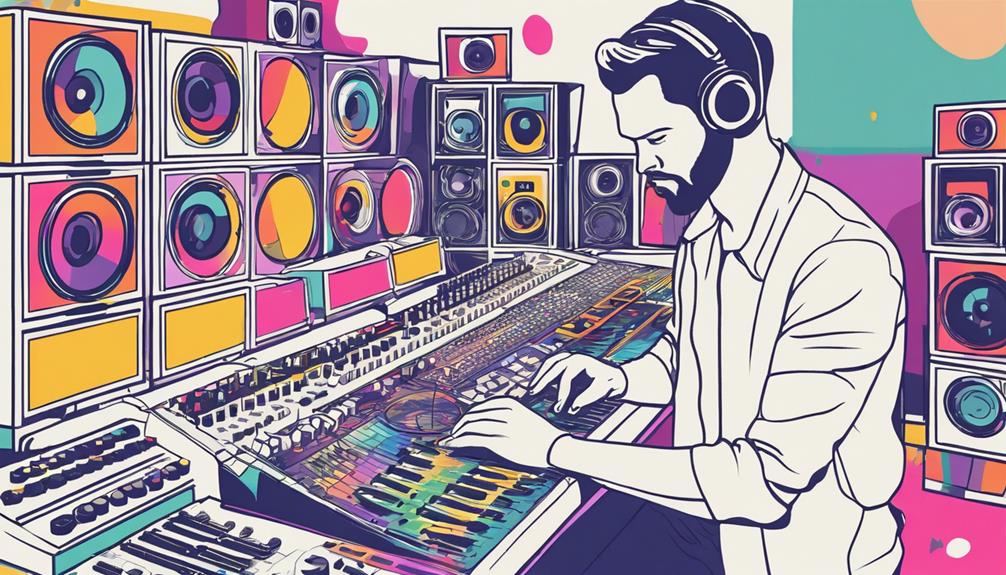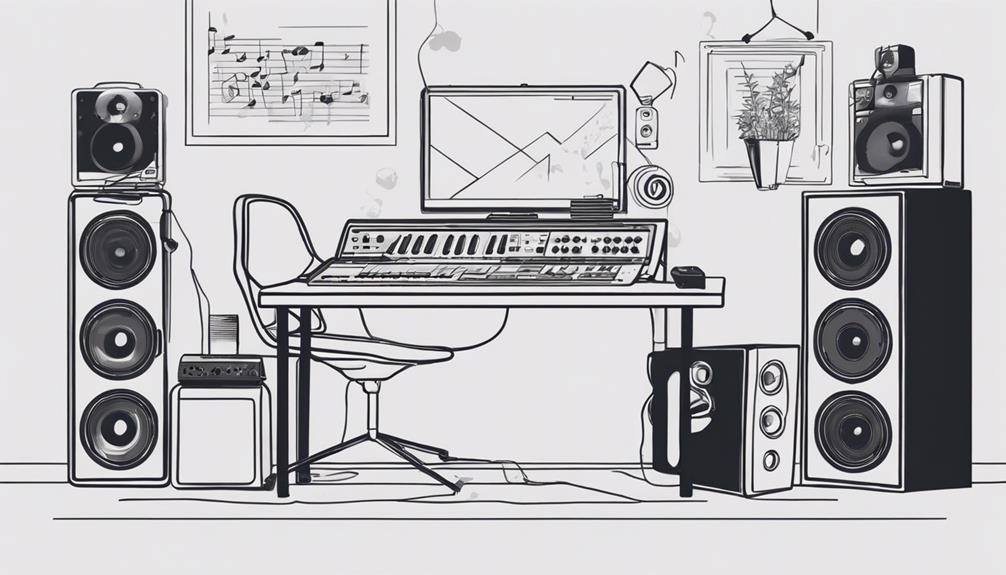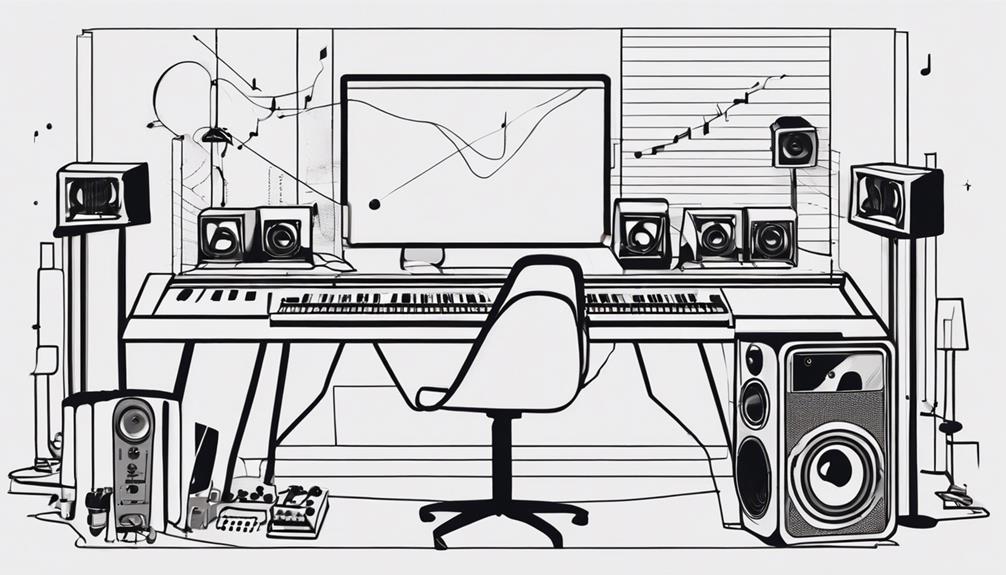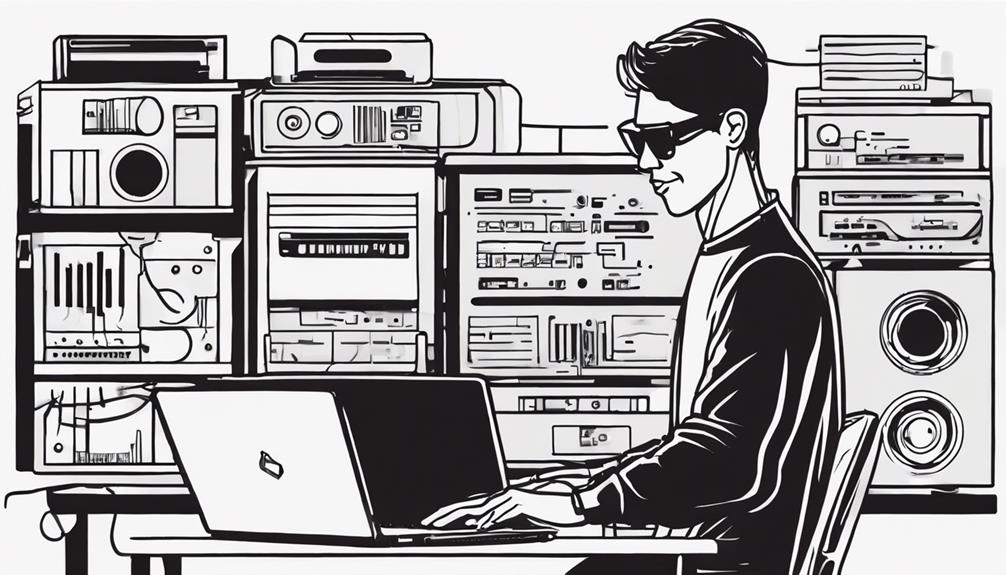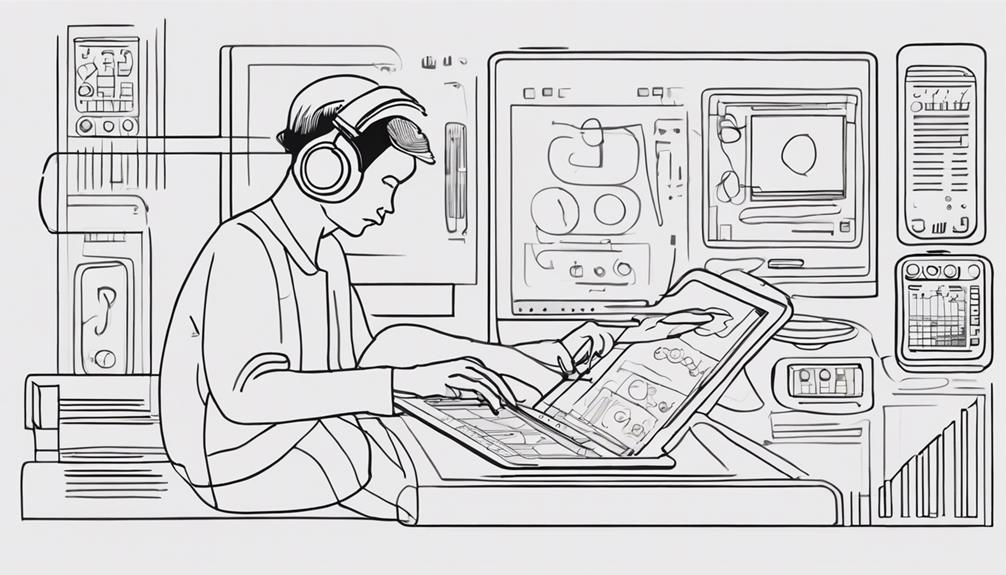To embark on house music production, immerse yourself in 4-on-the-floor kick drum beats and synths like the 707, 808, and 909. Set your tempo around 120-130 BPM for that classic vibe. Explore subgenres like deep house and tech house for inspiration. Acquire essential gear like Ableton Live, quality headphones, and Serum synth. Learn drum programming and synth techniques to craft dynamic tracks. Experiment with melodies and chords, then refine your sound design with effects and mastering tools. Promote your music on social media and collaborate with fellow artists for exposure. Mastering these steps opens doors to limitless creativity in house music production.
Key Takeaways
- Invest in essential gear like a DAW, MIDI controller, and quality headphones.
- Learn drum programming, synthesis, and arrangement techniques.
- Experiment with melodies, harmonies, and layering for unique sounds.
- Focus on sound design, effects, and automation for dynamic tracks.
- Promote your music through social media, collaborations, and label submissions.
House Music Production Basics
To kickstart your journey into house music production, grasp the fundamental elements of the genre, including the iconic 4-on-the-floor kick drum rhythm and the typical tempo range of 120-130 BPM.
When crafting a house track, the kick drum serves as the heartbeat, driving the energy and movement of the music. Classic drum machines like the 707, 808, and 909 have been instrumental in shaping the signature sound of house music, providing producers with timeless percussive sounds to work with.
Delving into sound design, synthesizers are key players in creating melodic house elements and crafting infectious chord progressions. These synths not only add depth and emotion but also contribute to the overall groove and vibe of the track.
When programming drums, focus on intricate 1/16 note patterns to enhance the rhythm, ensuring the kick-clap combination pulsates with energy.
Understanding House Music Subgenres
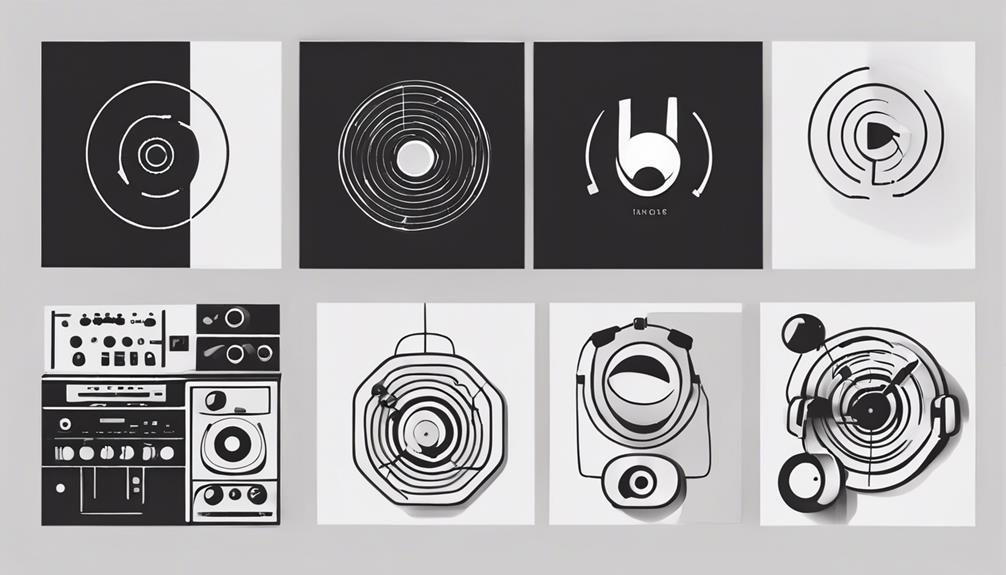
Explore the diverse landscape of House Music Subgenres, each offering unique characteristics and influences within the genre. Classic house music sets the foundation with electronic drum beats, repetitive rhythms, and soulful vocals, taking inspiration from disco and funk.
Deep house, on the other hand, focuses on mood and atmosphere, incorporating soulful melodies, jazzy chords, and smooth basslines for a laid-back and groovy feel.
Soulful house merges elements of gospel, jazz, and R&B with deep house beats, emphasizing emotional vocals and uplifting tunes.
Afro house brings traditional African rhythms and instruments into the mix, infusing electronic elements to create infectious grooves and tribal influences in its sound.
Lastly, tech house combines the energy of techno with the groove of house music, featuring driving beats and futuristic sounds.
Understanding these subgenres allows you to appreciate the rich tapestry of influences that shape the world of House music production.
Essential Equipment and Software
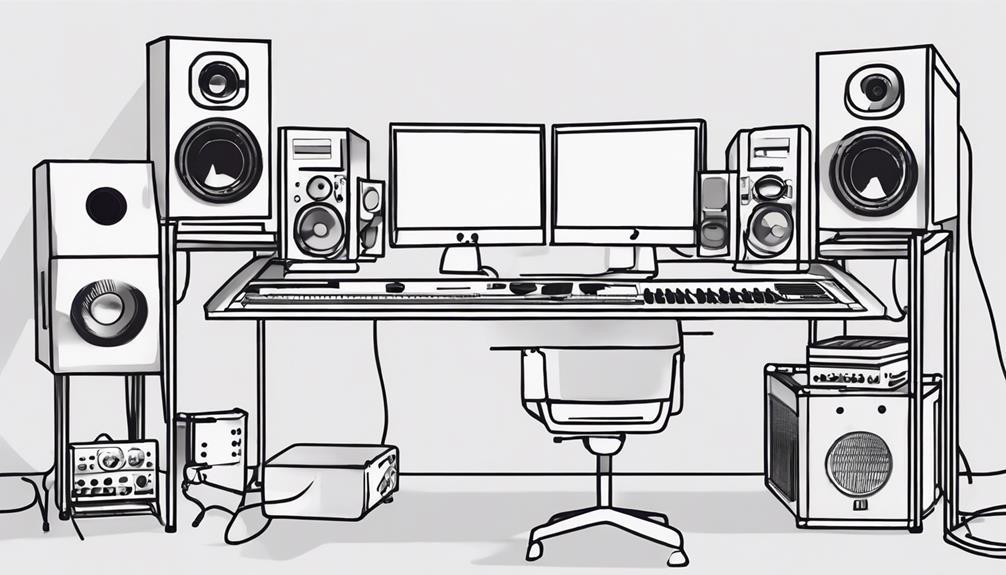
Consider essential equipment and software for house music production to guarantee you have the necessary tools to create quality tracks. A digital audio workstation (DAW) like Ableton Live or FL Studio is an essential requirement. These software options offer powerful features tailored to house music production.
Additionally, synthesizers such as Serum, Sylenth1, and Massive are crucial for crafting unique sounds that define the genre. To guarantee accurate sound representation, invest in studio monitors and audio interfaces. Quality headphones are also important for precise mixing and editing.
A MIDI controller can enhance your creativity by providing a tactile interface for music production. Remember, having a reliable computer with sufficient processing power and RAM is crucial for running demanding software and plugins smoothly. Consider complementing your setup with MIDI keyboards and studio acoustics to further elevate the quality of your house music production.
Building a Strong Foundation
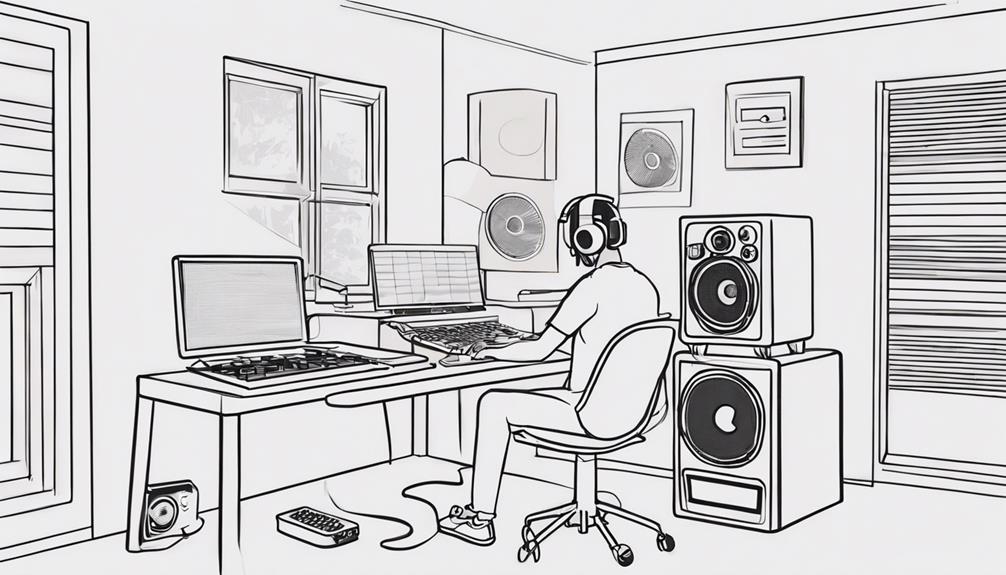
You need to focus on essential gear setup and mastering basic techniques to lay a solid foundation for your house music productions.
Learning the fundamentals of drum programming and understanding the 4-on-the-floor kick drum rhythm are vital starting points.
Essential Gear Setup
Setting up a strong foundation for your house music production involves acquiring essential gear. This includes a digital audio workstation (DAW), quality studio headphones or monitors, a MIDI controller, synthesizers, and a reliable computer.
- Digital Audio Workstation (DAW): Choose software like Ableton Live, Logic Pro, or FL Studio for creating your tracks.
- Quality Studio Headphones or Monitors: Invest in these to guarantee accurate mixing and mastering of your music.
- MIDI Controller: Consider getting one to have hands-on control over virtual instruments and effects.
- Synthesizers: Explore options like Serum, Massive, or Sylenth1 for crafting unique sounds and melodies.
- Reliable Computer: Make sure your computer has enough power and memory to handle complex music production tasks smoothly.
With these tools, you can experiment with different drum sounds, work on chord progressions, manipulate energy levels, add white noise for depth, and use the Groove Pool feature within your chosen DAW to enhance the rhythm and groove of your house music productions.
Learning Basic Techniques
To lay a solid groundwork in house music production, mastering basic techniques is key, encompassing drum programming, synthesizer utilization, and arrangement strategies. When delving into the world of house music, understanding the drum groove is essential. Start by studying the classic 4-on-the-floor kick drum rhythm and the typical tempo range of 120-130 BPM to capture the signature sound of house. Experiment with different synthesizers to find the right one for your style; explore the history of house music and the genres of electronic dance to refine your sound. Below is a table to guide you through learning basic techniques in house music production:
| Basic Techniques | Description |
|---|---|
| Drum Programming | Master the art of creating dynamic and engaging drum patterns. |
| Synthesizer Utilization | Learn how to manipulate different synthesizers for unique sounds. |
| Arrangement Strategies | Understand how to structure your tracks for maximum impact. |
Crafting Melodies and Chord Progressions
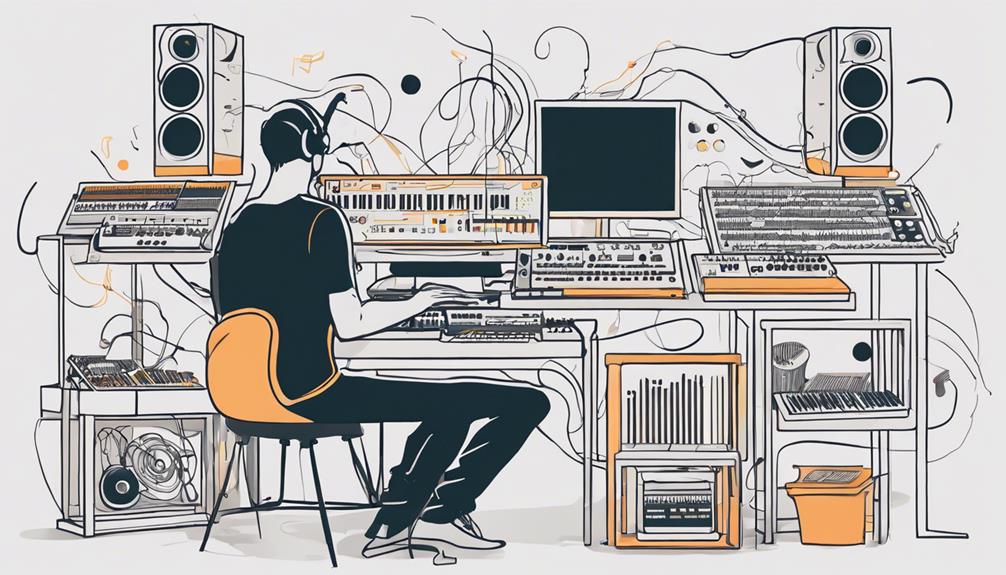
When crafting melodies and chord progressions in house music production, focus on creating melodic hooks that captivate your listeners.
Experiment with harmonic layering techniques to add depth and complexity to your tracks.
These elements play an essential role in shaping the overall mood and impact of your house music production.
Melodic Hooks Importance
Crafting melodic hooks plays a pivotal role in elevating the impact and memorability of your house music productions. Melodies and chord progressions are the backbone of your tracks, setting the tone and atmosphere while guiding the listener through a musical journey.
Here are some key points to keep in mind when focusing on crafting melodic hooks for your house music productions:
- Experiment with harmonies and counterpoint: Create intricate and intriguing melodies by exploring different harmonic relationships and melodic interplay.
- Align melodies with the subgenre: Tailor your melodic hooks to fit the specific style and mood of the house music subgenre you're producing.
- Utilize layering techniques: Enhance the richness and depth of your melodies by layering different sounds and textures to create a more complex sonic landscape.
- Employ processing tools: Use EQ, compression, and effects to shape and polish your melodies, ensuring they cut through the mix with clarity and impact.
- Focus on creating memorable phrases: Craft melodic hooks that are catchy, emotive, and leave a lasting impression on the listener, making your tracks stand out.
Harmonic Layering Techniques
Experimenting with harmonic layering techniques in house music production can elevate the depth and emotional impact of your melodies and chord progressions. By delving into different scales, harmonies, and counterpoint techniques, you can craft melodies that stand out in the world of house music.
It's important to align these harmonies with the specific style of house music you're aiming for, whether it's deep house or melodic house, to guarantee a cohesive sound throughout your track.
When layering melodies and harmonies, consider using EQing, compression, and processing to refine and enhance the clarity and impact of each element within the mix. This attention to detail in shaping the frequencies and dynamics of your sounds can lead to a more engaging sonic landscape.
Adding Finishing Touches
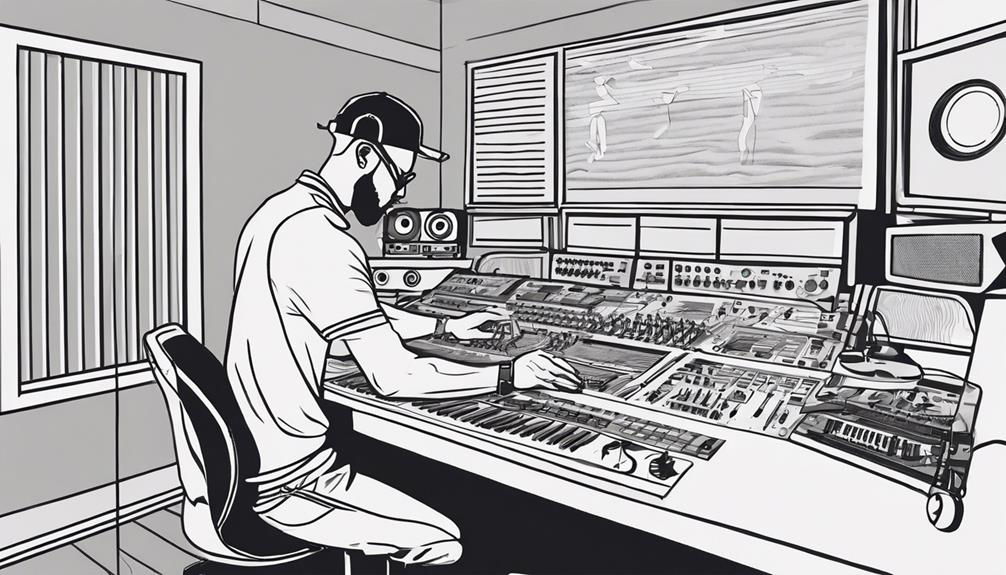
To enhance the overall depth and immersive quality of your house music track, consider adding finishing touches such as effects like reverb, delay, and modulation. These effects can add a sense of space and movement to your sounds, creating a more engaging listening experience.
In addition to effects, utilizing automation is essential for crafting dynamic arrangements and evolving sounds within your track. When finalizing your production, mastering software like Izotope Ozone or FabFilter Pro-L can help achieve a polished and professional sound. Remember, mastering isn't just about loudness but also about ensuring balance and clarity in your mix.
To master effectively, follow tips such as using presets, adjusting settings according to your track's needs, and referencing other tracks to guide your decisions. Lastly, don't overlook the importance of EQ adjustments, compression, and precise effects application to fine-tune the overall sound and make your house music track stand out.
Promoting Your House Music

When it comes to promoting your house music, leveraging social media platforms can greatly amplify your reach and engagement with potential listeners. Use platforms like SoundCloud, Instagram, and Facebook to share your tracks and connect with a wider audience.
Collaborating with other producers, DJs, and artists in the house music community can expand your network and introduce you to new listeners. Submit your tracks to house music labels, blogs, and playlists for potential features and exposure to a larger fan base.
Create a professional website or electronic press kit (EPK) to showcase your music, bio, press photos, and upcoming gigs for industry professionals and fans. Engage with your followers through email newsletters, live streams, and behind-the-scenes content to build a loyal fan base and promote your music effectively.
Frequently Asked Questions
What Do I Need to Start Producing House Music?
To start producing house music, you need a Digital Audio Workstation (DAW) like Ableton Live, Logic Pro, or FL Studio, quality headphones or studio monitors, a MIDI controller, synthesizers like Serum or Massive, and a reliable computer.
How Do I Get Good at Producing House Music?
To get good at producing house music, practice regularly to refine drum programming, synth design, and mixing techniques. Study different subgenres to grasp unique production needs. Seek feedback from pros and analyze tracks for inspiration. Experiment with innovative techniques for a modern sound. Embrace collaboration with other producers to exchange ideas and learn from their processes, which can greatly enhance your skills. Dive into tutorials and resources that offer master music production tips, helping you to tackle challenges and refine your workflow. Above all, stay patient and consistent, as developing expertise in house music takes time and dedication.
Can You Make House Music on FL Studio?
Yes, you can make house music on FL Studio. Its user-friendly interface, extensive plugin support, and robust MIDI capabilities make it a popular choice among electronic music producers. With the right tools and techniques, you can craft high-quality tracks.
What Is the BPM of House Music?
House music typically ranges between 120-130 BPM. This tempo, with its 4-on-the-floor kick drum rhythm, creates a lively and energetic feel, keeping the dance floor moving. DJs and producers use variations in this range to craft different subgenres and moods.
Conclusion
So there you have it – just follow these simple steps and you'll be on your way to becoming the next big house music producer.
Remember, it's all about passion, dedication, and a little bit of luck.
Who knows, maybe one day you'll be headlining festivals and selling out shows.
So get out there, start creating, and let the music speak for itself.
The house music world is waiting for your unique sound to shake things up.

